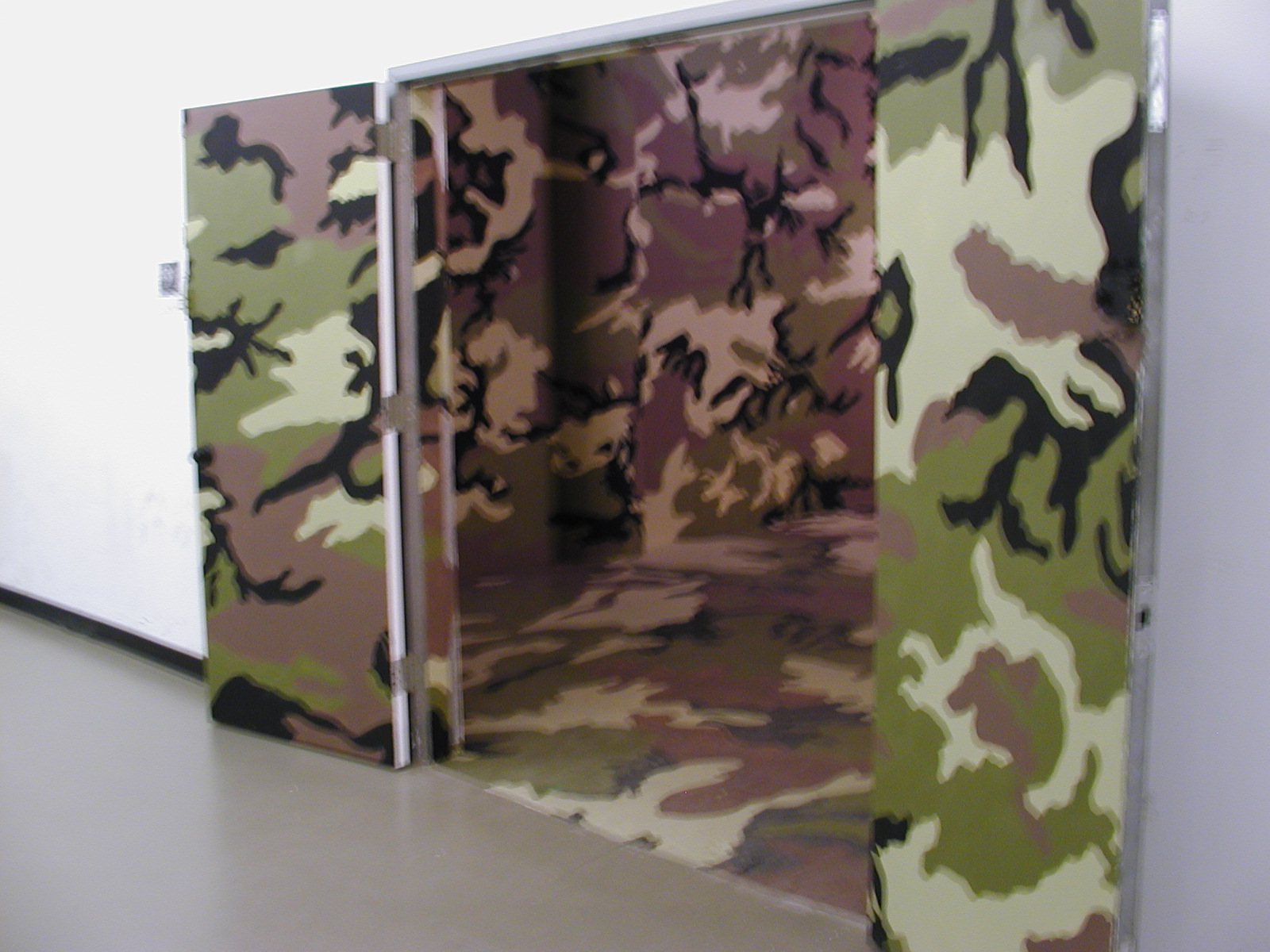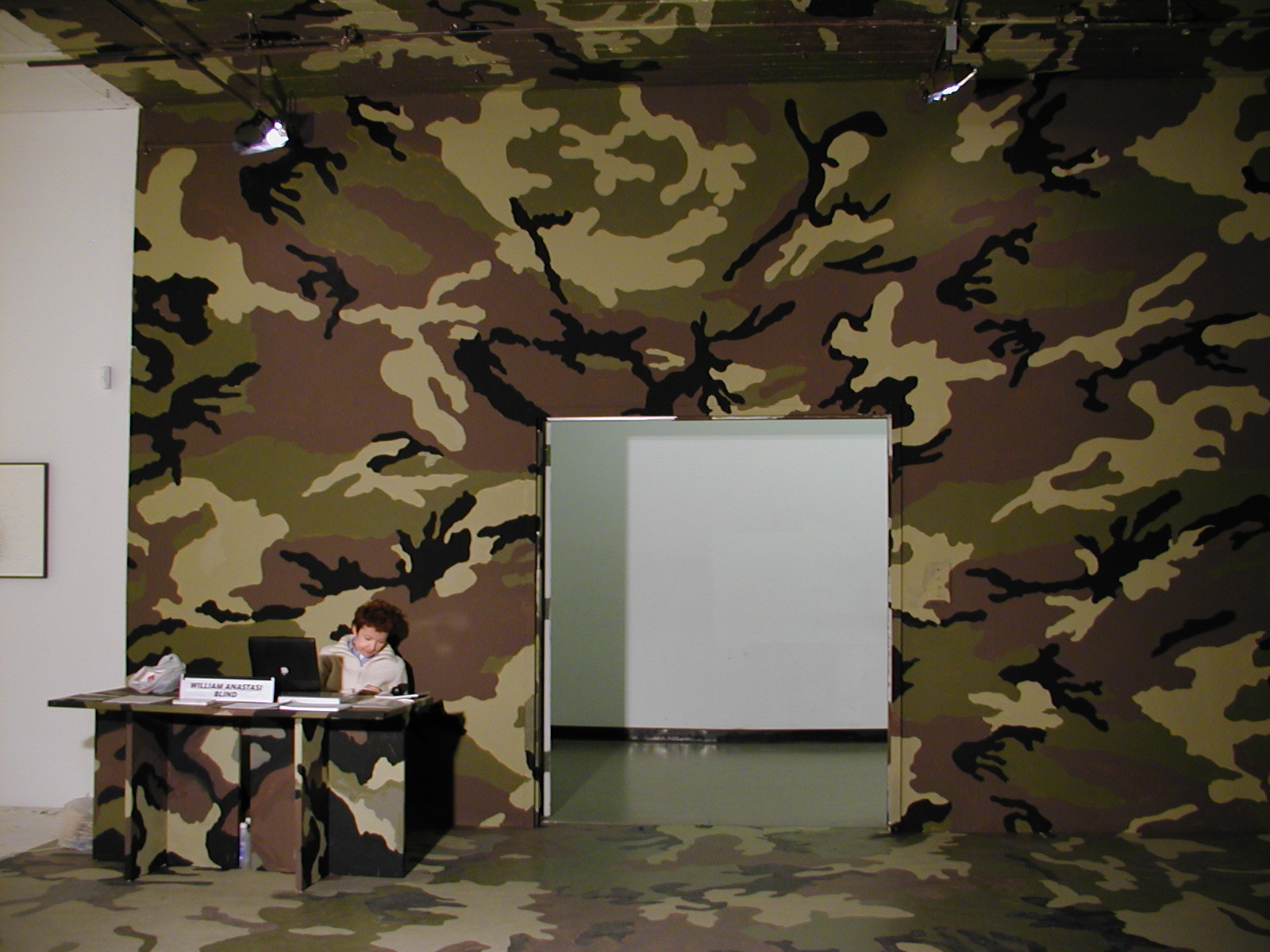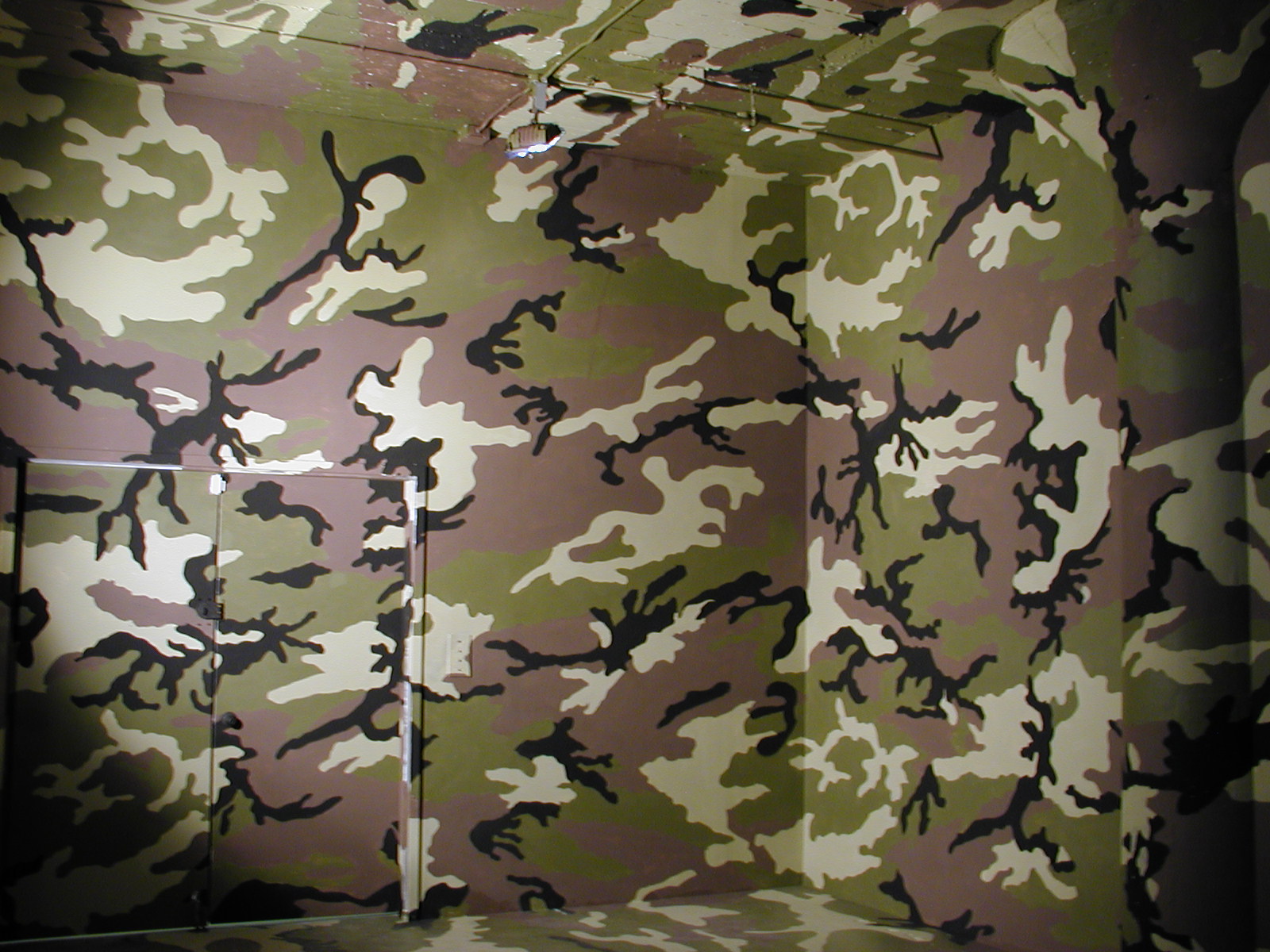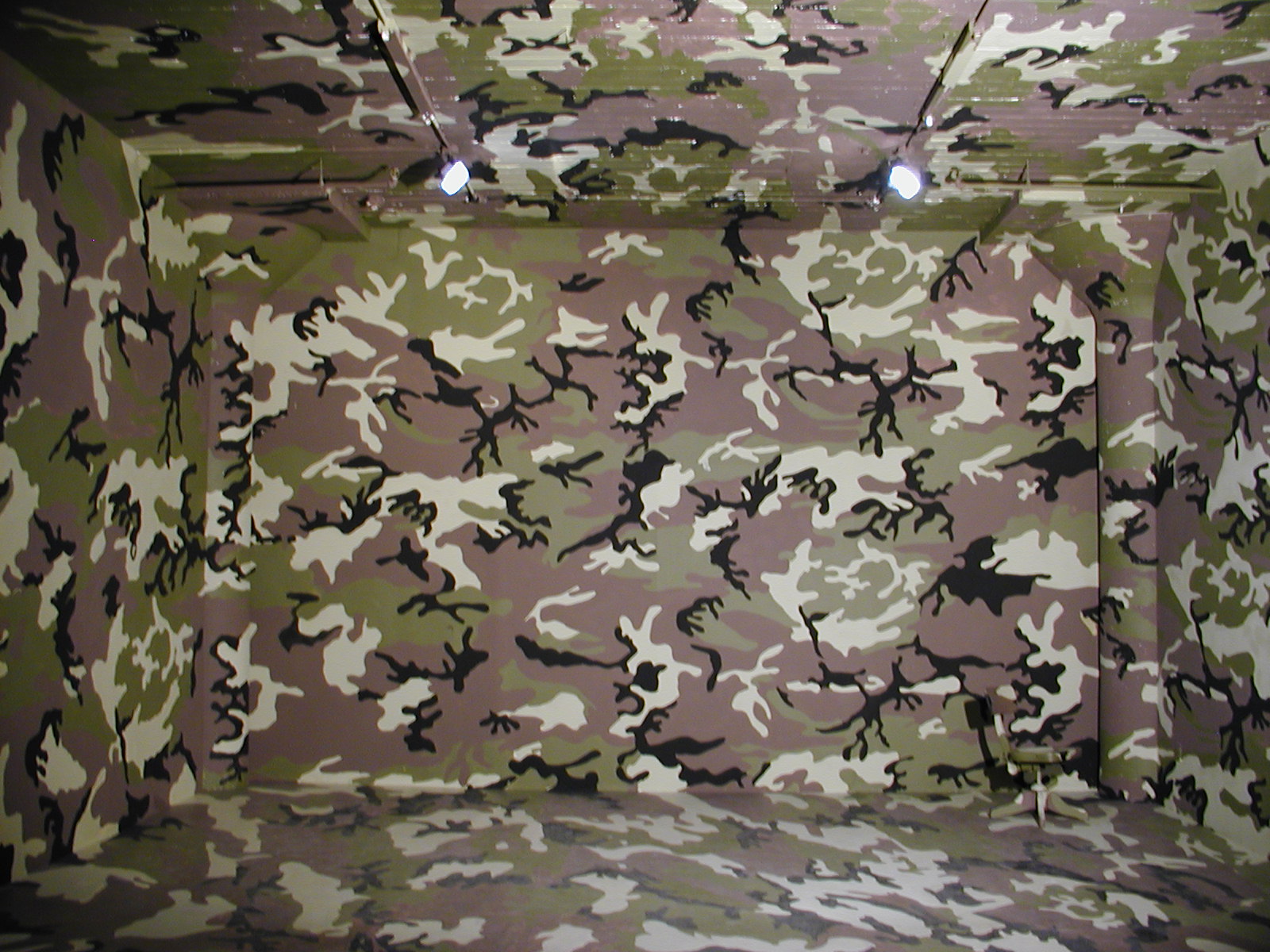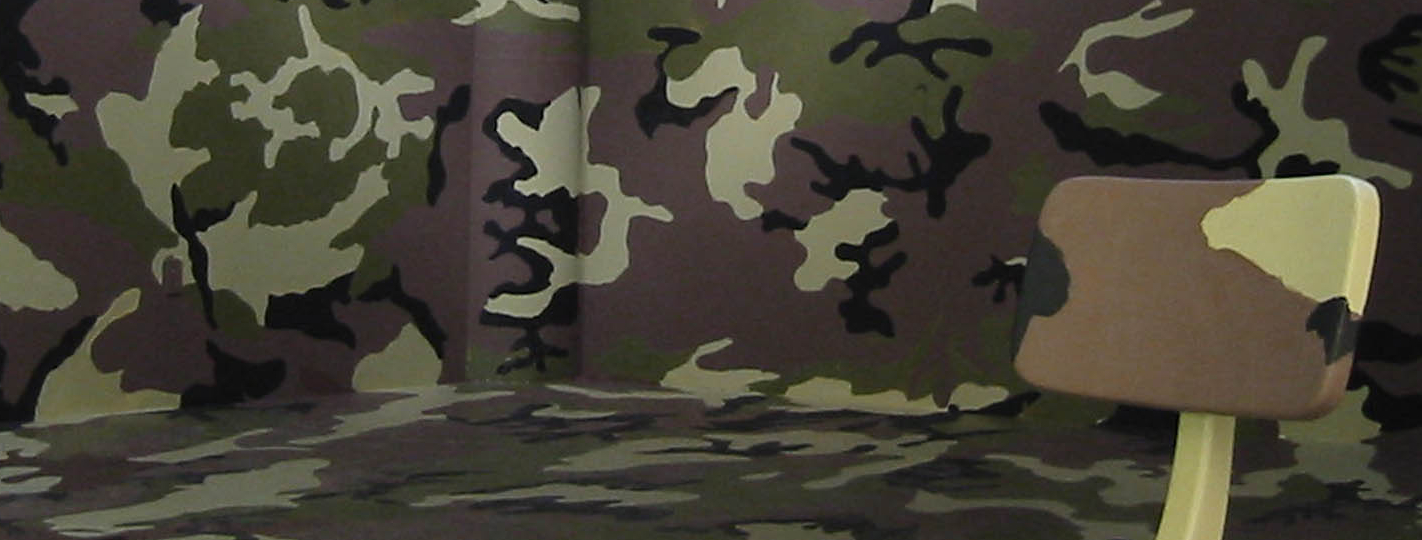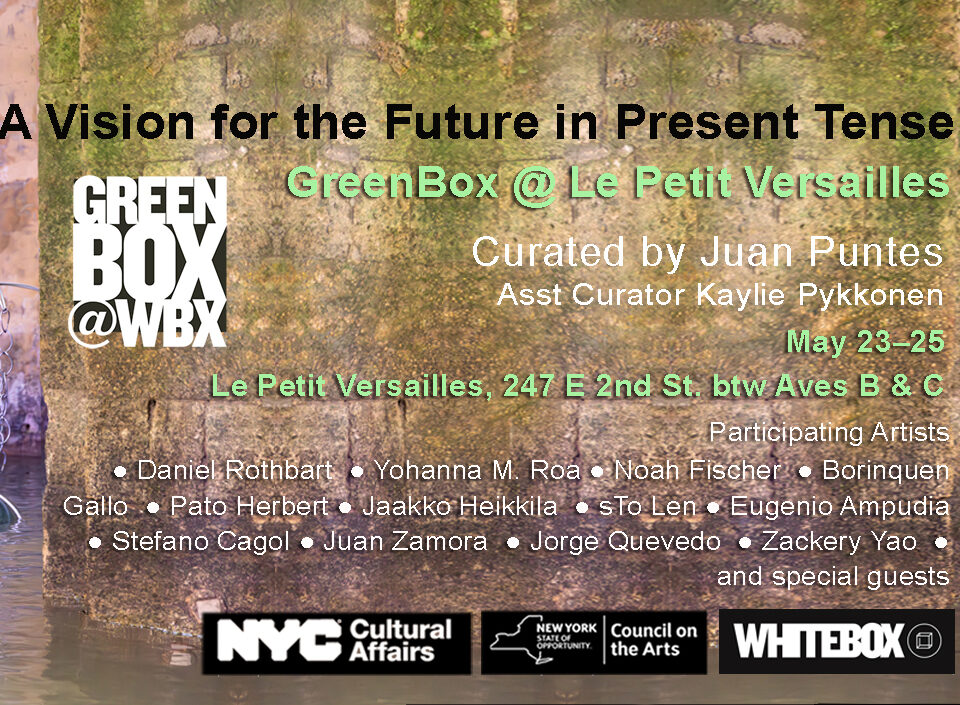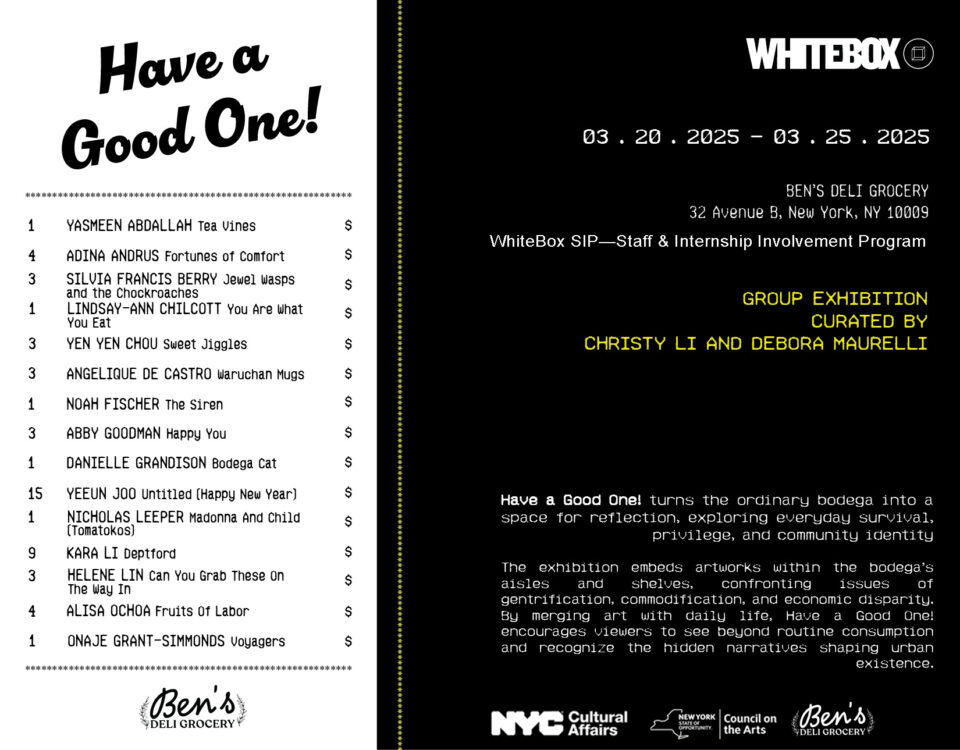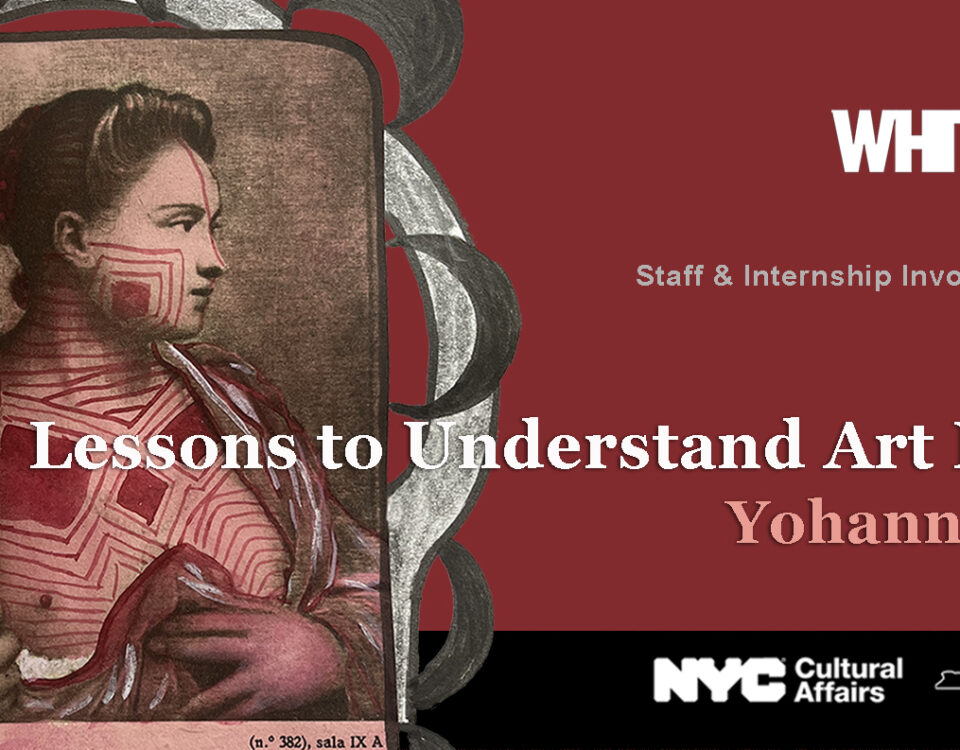Conrad Atkinson: Constantly Contesting
March 1, 2003MIGUEL ANGEL RIOS: NI ME BUSQUES… NO ME ENCUENTRAS
April 8, 2003
WILLIAM ANASTASI: BLIND
The Dwan Gallery Camouflage Proposal, 1966 / White Box Annex project, 2003
March 8 – March 29, 2003
OPENING RECEPTION SATURDAY MARCH 8, 6 – 8 pm
War is like love; it always finds a way. -Bertolt Brecht
How is the world ruled and how do wars start? Diplomats tell lies to journalists and then believe what they read. -Karl Kraus
In November/December, 1966, years before the term site-specific had become a by-word, William Anastasi presented for consideration a number of drawings and proposals for exhibitions at the Dwan Gallery, New York. In each of these proposals the idea of the self-referential loomed large, and the gallery space would be a relevant component of the exhibit. One of the proposals called for the camouflaging of the gallery’s interior – walls, ceiling, lights, ashtray stands and wall-to-wall carpeting. Another proposal’s drawing shows chain-link fencing erected 12 inches away from the four walls, the floor and the ceiling of Dwan’s main gallery: a cage barely smaller than the room that contains it. A third series of drawings specifies six silk-screened paintings, one for each discrete wall of the gallery. Each painting would depict, in a ten-percent scale reduction, the wall on which it hangs, showing in their appropriate positions the air-vents, the electrical outlets, the picture molding. It was this exhibition, under the title Six Sites, that opened at Dwan in April, 1967.
The idea of camouflaging the interior of the gallery was passed over for logistical reasons. The April slot had been pre-arranged. With another exhibit scheduled to follow, it was clear that the show could not be dismantled or the space brought back to readiness in time. Nonetheless, the currency of the camouflaging proposal became more and more obvious with each day’s news report. Our elected leaders were enthusiastically building up their forces in South Vietnam and ordering a daily rain of bombs for Hanoi in the first weeks of December that year.
Freud was certain that all of human history could be described as an endless war between the urge to love and the urge to destroy. The puzzling statistic that tells of plummeting suicide rates in the face of war suggests that conflict is a kind of narcotic. For many, unfortunately, it may actually fill some sort of spiritual void.
Aside from the timeliness of the proposal, Anastasi was interested in the conceptual inversion implied in camouflaging the inside of something. Understandably, since camouflaging is an attempt to make something invisible or less visible, what is camouflaged is always the outside of something – a tank or a building or a battalion. If we are in fact inside of a space, questions about its visibility become moot. Now colored forms surround us, forms originally designed to move a thing towards invisibility within a given environment. When those forms instead constitute the environment, the expected effect is displaced. In the gallery release for Six Sites thirty-six years ago Anastasi called gallery walls “the sacred burial ground for paintings.” The emotional reverberations associated with camouflaging in its real world role forces the response: burial ground indeed.
